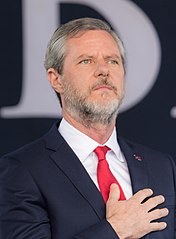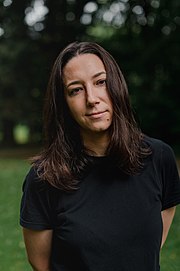Design
Design
Personality
Chart Properties
Your Cross represents the specific theme of your life. This cross embodies your unique potential & the lessons you're here to learn, providing a roadmap to fulfilling your life purpose.
We use the UTC birth time and date to do the calculations required to generate your Human Design chart.
Buy Tokens
Pay as you use, no expiry and no subscription required.Prompt Ideas
Get inspired with some epic prompt ideas.Barry Manilow's Biography
American musician, singer, author and songwriter who achieved mega-pop stardom in the 1970s. Music critics and comedians like to punish his sweet lyrics by calling him, “the sultan of schmaltz.” Despite the lack of respect given to him by music writers, Manilow has sold more than 58 million records worldwide. He posted a string of 25 consecutive Top 40 Billboard hits and five of his albums were listed on the pop charts simultaneously. Manilow won a Tony award in 1977 for his Uris Theatre show. In 1977, he won an Emmy for his TV special and a Grammy the same year for his hit song, “Copacabaña.” In 1990, Rolling Stone magazine called the singer-musician, “the showman of our generation.” His many hidden fans include heavy metal rocker Axl Rose, TV host Arsenio Hall and singer-songwriter Bob Dylan. He wrote his memoirs, “Sweet Life: Adventures on the Way to Paradise” at the age of 41 and talked about the rise and fall of his pop career and financial fortunes.
Manilow never knew his father, Harold Kelliher, a truck driver who divorced his mother when Manilow was only two years old. The boy was raised by his mother Edna and his maternal grandparents in the Williamsburg section of Brooklyn, New York. At the age of seven, he took up accordion lessons. At 13, his mother married Irish truck driver, Willy Murphy, who introduced the boy to his jazz and big band records. Manilow took up piano lessons at this time and developed a great relationship with his step-father as they both shared a love of music. As a youngster, Manilow played the records of stage shows and performed alongside the songs. He knew that he would somehow make a career in music. Manilow idolized his travel agency secretary mother. When she returned from work with her familiar, “Hiya Babe,” it made Manilow imagine she was a martini-drinking sophisticated woman to be adored.
He went to New York College of Music and the Juilliard school. While going to school, he supported himself by working a day job in the CBS mailing room. At 18, he wrote the original score for a musical adaptation of a melodrama called “The Drunkard” which became a long-running off-Broadway success. In the sixties, Manilow arranged and conducted television and live cabaret acts. He also wrote many commercial jingles for companies such as State Farm Insurance and McDonald’s. In 1972, he worked as pop singer Bette Midler’s musical director, arranger, and pianist. He co-produced her two records “The Divine Miss M.” and “Bette Midler” in 1972. In 1973, he persuaded Bette Midler’s staff to allow him to be the opening solo act for Midler’s U.S. tour. His opening solo performance caught the attention of Clive Davis at Arista Records.
In 1974, Arista Records signed Barry Manilow to a recording contract and Clive Davis became the architect of Manilow’s pop singer career. He scored a huge hit with his first song, “Mandy” in 1974. Soon hit songs by Barry Manilow were all over the nation’s airwaves in the mid-1970s including “I Write the Songs,” “Looks Like We Made It,” “Can’t Smile Without You” and “Could It Be Magic.”
By the 1980s, his popularity began to decline, and he tried to do other material such as releasing his jazz inspired album “2:00 AM Paradise Cafe” in 1984. In the early ’80s, he discovered he was in financial straits. His investment advisors were careless and after selling 50 million records he only had $11,000 to show for it. He had to tour and continue to make records to climb out of his financial difficulties. In 1985, he returned to his Bel-Air home and retired from the music industry for two years. In that time, he started his memoirs, which were published in 1987. In the ’90s, Manilow continued to release albums and tour the U.S. and Europe. In 1992, a retrospective CD boxed set of his works were released to the public. In 1997, he worked on his musical “Harmony” which is scheduled for a Broadway opening in 2000.
Manilow always viewed himself as a skinny geek kid with buck teeth and a big Adam’s apple. He lacked confidence and girls never wanted to go out with him on dates. At 21, Manilow married his first high school love but the marriage lasted only a year. His mother attempted her third suicide when she heard about her son’s elopement. In October 1987, he learned of his mother’s lung cancer diagnosis. Manilow describes himself as a cleanliness freak. He moved to Los Angeles in 1978 and now resides in Bel-Air, California, the next door neighbor of Ronald and Nancy Reagan. His friends are few but very close to the singer. He prefers to see himself as a creative musician rather than a popular singer. Manilow does not take up social issues or perform benefit concerts. Not until he took acting lessons in 1980, did he begin to have self-confidence performing on stage. He admits that his success in the ’70s, turned him into a brat. Now he tries to keep his ego in check.
On 22 May 1999, Manilow developed an infection stemming from dental surgery. He was released from the hospital two days later to finish recovering at his home in Los Angeles. The singer-musician does not drink alcohol nor use drugs because it makes him nauseous.
According to People magazine he married his longtime manager Garry Kief in 2014 in an unofficial ceremony at his Palm Springs, California home but made no official announcement.
Link to Wikipedia biography
Barry Manilow
Your Cross represents the specific theme of your life. This cross embodies your unique potential & the lessons you're here to learn, providing a roadmap to fulfilling your life purpose.
We use the UTC birth time and date to do the calculations required to generate your Human Design chart.






